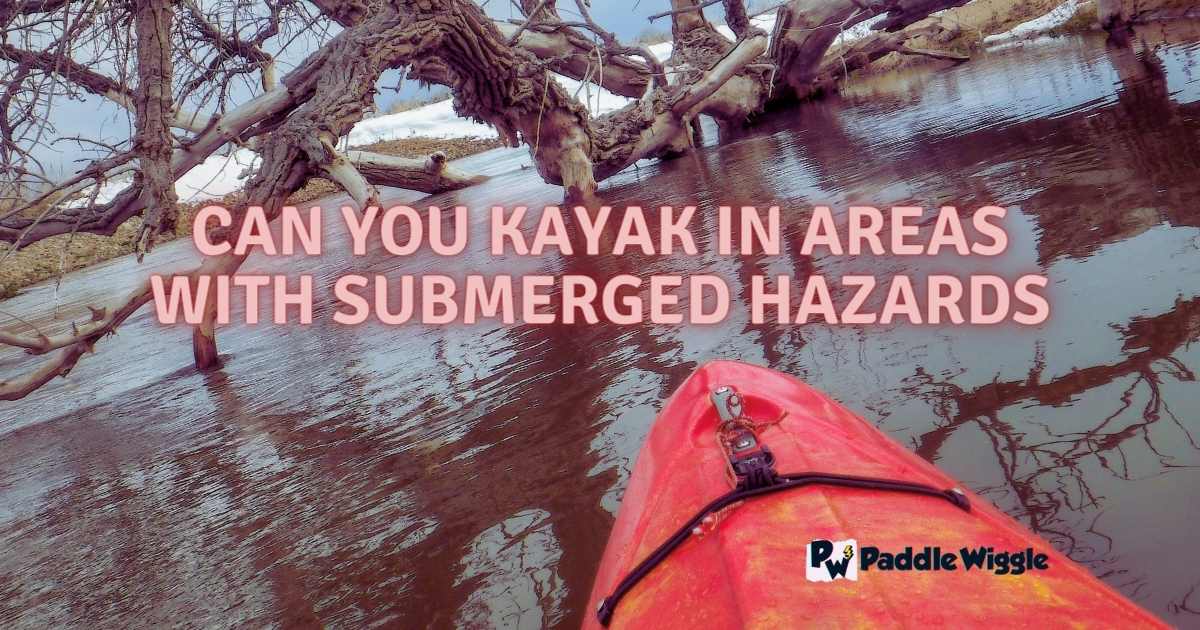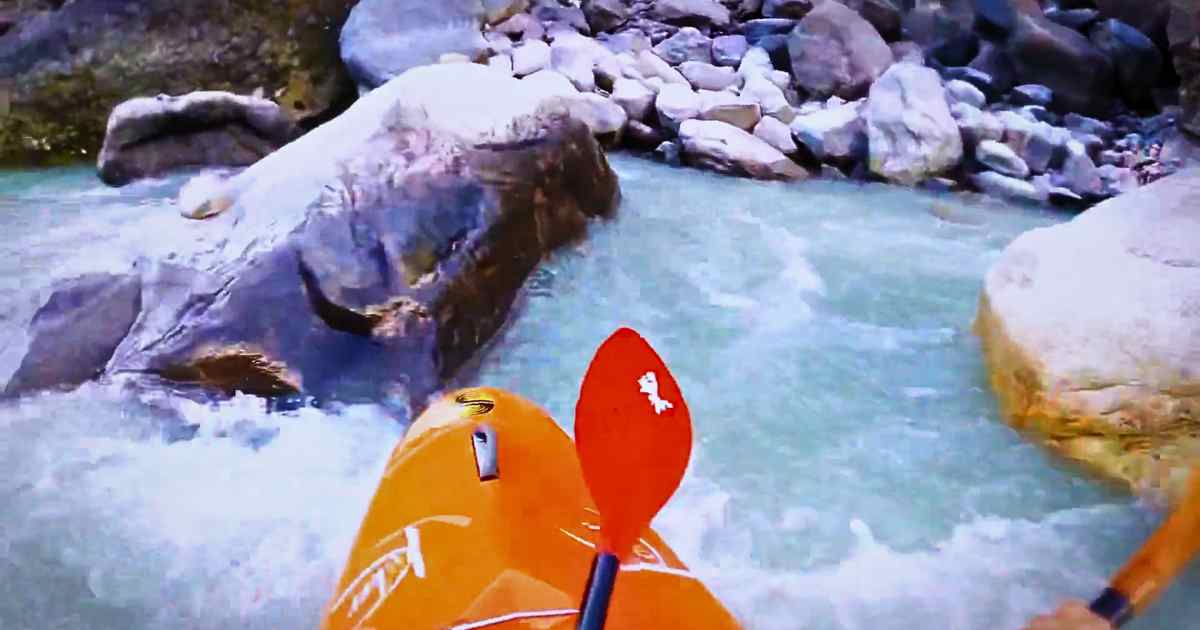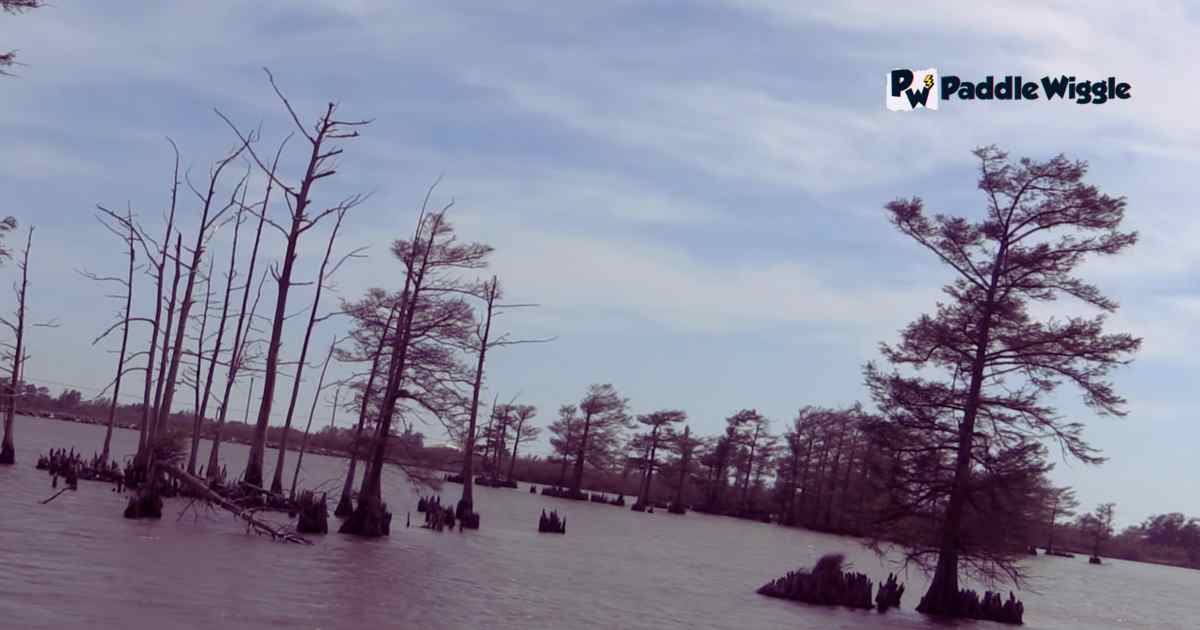Kayaking is a super fun water sport where you get to paddle through beautiful waterways and enjoy nature’s wonders. But there’s something important to think about submerged hazards. Things like rocks, tree stumps, or debris hide under the water.
So, should you kayak in areas with submerged hazards? Well, it’s not a good idea, my friend.
Submerged hazards can be dangerous. They can make your kayak flip over, and that’s no fun at all. You might even get hurt or damage your kayak if you crash into rocks or tree stumps. Ouch!
That’s why it’s important to be careful and think about where you’re going to kayak. And if you’re just starting out, it’s best to avoid areas with submerged hazards. There are many other amazing places to explore where you can paddle around safely and have a blast!
Contents

Common Submerged Hazards For Kayakers
Have you ever wondered what hidden dangers might be lurking beneath the surface while you’re kayaking? These hazards include things like rocks, tree stumps, and other obstacles that can cause problems if you’re not careful.
Let’s explore a few common submerged hazards for kayakers:
Rocks And Boulders


Rocks and boulders are like hidden obstacles underwater in rivers, lakes, and coastal areas. They can be tricky to see, especially if the water is murky or moving fast.
To avoid hitting them, here’s what you can do:
- Go slowly and carefully, and always look ahead at the water.
- Learn to notice special signs on the water’s surface, like ripples, bubbles, or changes in the color of the water.
- If you see rocks or boulders, stay away from them by carefully changing your direction or paddling around them.
Tree Stumps And Snags


Tree stumps and snags are like hidden parts of trees in rivers, lakes, or estuaries. They can be underwater, just below the surface, or sticking out a little. They can be dangerous because they might tip over your kayak or get tangled up.
Here’s what you can do to handle them:
- Look for signs of tree stumps underwater, like branches or debris floating on the water’s surface.
- When getting close to areas with tree stumps, paddle safely to avoid crashing into them or getting tangled.
- If you come across a tree stump underwater, use quick and careful paddle strokes to go around it while keeping your balance.
Submerged Vegetation
Submerged vegetation means underwater plants, like grass or aquatic plants, and they can be found in shallow or freshwater areas. They can get tangled up in your kayak or slow you down.
Here’s what you can do when dealing with submerged vegetation:
- Be watchful for signs of vegetation, like patches of floating plants or places where the water moves strangely.
- Use shorter and more controlled paddle strokes to avoid getting tangled in the plants.
- If you get tangled, gently paddle backward or reverse your strokes to free yourself.
Underwater Obstacles And Debris
Underwater obstacles and debris are things like fallen trees, logs under the water, or trash that might be in rivers, streams, or coastal areas. They can be dangerous because they can crash your kayak or tip over.
Here’s what you can do to lower the risks:
- Look at the water’s surface for floating debris, branches, or logs. These can show you that there might be obstacles underwater.
- Stay in deeper parts of the water and avoid shallow areas where you’re more likely to find obstacles.
- When you’re getting close to areas with underwater obstacles, paddle slowly and carefully, and keep a safe distance.
Man-Made Structures
Man-made structures are things that people built, like piers, docks, or things underwater that people made. Sometimes, when you’re kayaking, you might come across these structures. They can be dangerous as well.
Because they might have sharp edges, or the water depth can suddenly change.
Here’s what you should do when you see man-made structures:
- Learn where these structures are before you go kayaking in that area. You can ask people who know the place or look at maps for information.
- Keep a good distance from these structures to avoid crashing into them or getting tangled.
- If you have to paddle close to a submerged structure, be careful and watch out for any possible dangers.
Things To Remember When Kayaking In Areas With Submerged Hazards
If you love kayaking and want to become even better at it, learning how to stay safe in the water is important. Sometimes there are hidden dangers underneath the surface that you need to be aware of.
But don’t worry! By remembering a few important rules and following them, you can have a fun and safe kayaking experience.
Let’s explore some easy guidelines to remember when kayaking in areas with hidden hazards.
Know Your Skills And Experience
Think about how good you are at kayaking and if you’ve faced tricky situations before. If you’re just starting out or not very experienced, it’s better to avoid areas with submerged hazards until you become more confident and skilled.
Research The Specific Submerged Hazards
Research to learn about the specific hazards in the areas where you want to kayak. Find out what kinds of hazards there are, where they’re located, and what risks they pose.
So, check if the water is clear or if it’s hard to see underwater. It’s also helpful to know if there are any safety tips from local experts or experienced kayakers.
Think About The Risks
Take a moment to think about what might happen if you come across submerged hazards while kayaking. Consider how serious the risks are, like if your kayak could flip over, if you might get hurt, or if you could get tangled in something.
Reflect on whether you feel ready to handle unexpected situations and if the potential risks are too high for you. If they are, it’s best to avoid kayaking in areas with submerged hazards.
Get Advice From The Experts
Talk to people who know a lot about kayaking and the specific areas you’re interested in. Local experts experienced kayakers, or guides can give you helpful advice based on their knowledge and experience.
They can tell you about the conditions and dangers and suggest safer places to go kayaking.
Consider The Water And Weather
Think about the conditions of the water and the weather in the areas with submerged hazards. Check if the water is deep or shallow, if there are strong currents, or if the weather could make things riskier.
Suppose the conditions are not good for kayaking safely like if the weather is bad or you can’t see well in the water, it’s not a good idea to go kayaking in those areas.
Final words
To sum it up, when you go kayaking in areas with hidden hazards under the water, it’s really important to be careful. Rocks, tree stumps, and other obstacles can be dangerous if you’re not careful.
So, pay attention, look out for signs of hazards and follow the safety rules we discussed. If you do these things, you can have a great time kayaking while staying safe.
And, if you ever find yourself kayaking in areas with hidden hazards, just remember to be cautious and make smart choices to have a fun and safe adventure on the water.



